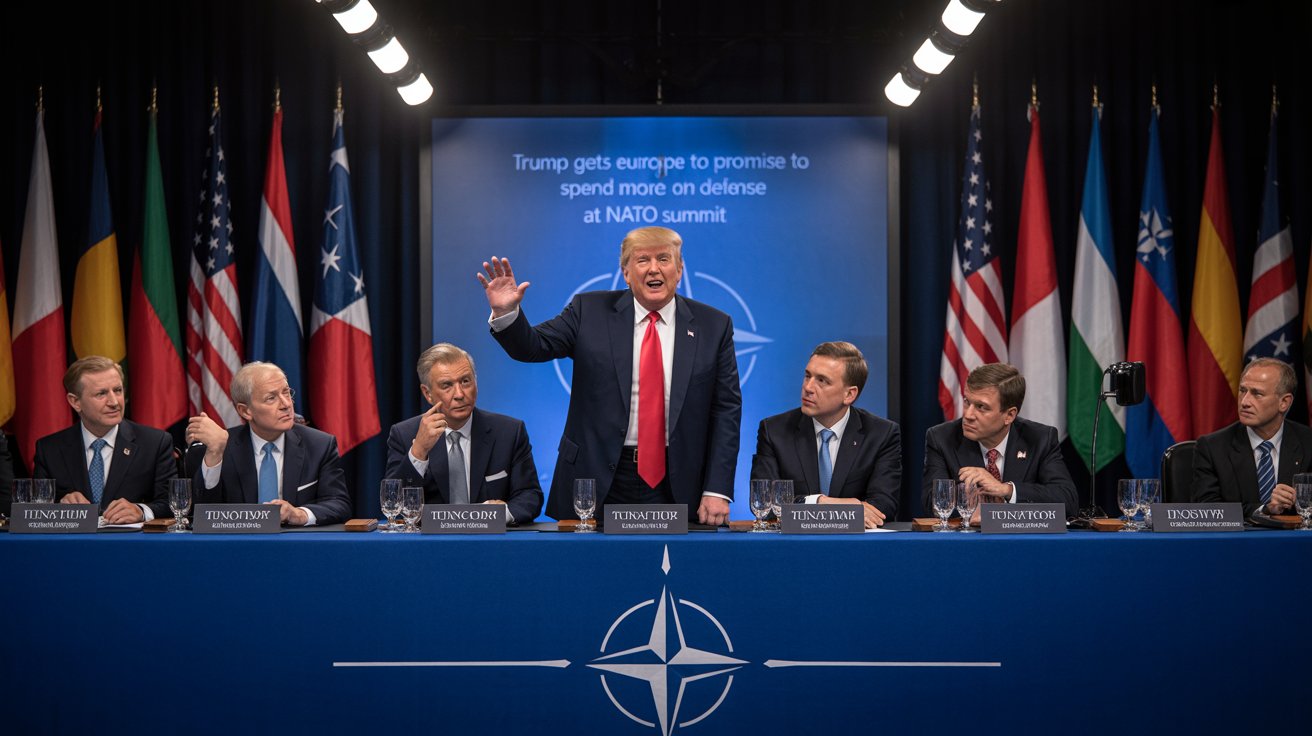On June 25, 2025, NATO leaders met in The Hague for a short but important summit. The goal was to make the alliance stronger and deal with long-standing worries about defense budget. The event was meticulously planned to minimize any problems between allies, and it ended with a historic agreement: NATO’s 32 member countries agreed to raise their defense and security budgets to 5% of their GDP over the next ten years. Donald Trump, the President of the United States, called the conference a “tremendous victory” and a historic milestone. He has long fought for a fairer division of defense costs.
A Summit Made to Get Results
The summit was short on purpose, right after a ceremonial dinner hosted by the Dutch royal family. The goal of this streamlined approach was to keep conversations on track and useful, especially to make sure they were in line with President Trump’s interests. The plan worked. Trump was happy with the result and said that no other president had been able to get such a promise from allies. “This is a game-changer,” he added, hailing the promise to share defense costs more evenly between the two sides of the Atlantic.
New Defense Spending Targets
| Goal | Value | Deadline |
|---|---|---|
| Current Spending (EU & Canada) | €500 billion | By 2025 |
| Target Spending | 5% of GDP (combined) | By 2035 |
| Of which Defense-specific | 3.5% of GDP | By 2035 |
| Other Security Investments | 1.5% of GDP | By 2035 |
| Additional Required Annual Funding | €350 billion | Beginning post-2025 |
This rise is a big change, especially when you think about how only a few European countries met the prior 2% GDP criteria just a few years ago.
Problems in Europe and Throughout the World
Moscow is worried about NATO getting stronger. Finland and Sweden have already joined the alliance, and this latest financial commitment shows that the transatlantic cooperation is getting even stronger. The extra money will go toward making the military more ready and up-to-date, which is in line with NATO’s strategy to deal with new threats.
But for European countries, getting to 5% is a long and hard road. The last statement from the summit made it clear that the 5% goal covers both direct defense spending (3.5% of GDP) and broader security investments (1.5%), which many nations already meet or are close to meeting. Support for Ukraine’s defense, such as aid and investments in its defense sector, will also count toward these totals. This is good news for countries like Germany and Denmark that have put a lot of money into Kyiv’s efforts. A review clause established for 2029 will let changes be made based on changes in technology and world politics.
Finding a Balance Between Burdens and Creating a European Defense Identity
Mark Rutte, the Secretary General of NATO, stressed how important justice is in the alliance. He remarked, “The United States has carried too much of the load for too long.” “This promise changes that, making sure NATO is strong and fair.” Right now, the U.S. spends around 3.2% of its GDP on defense, and European partners are trying to meet or beat that amount.
Camille Grand, director of the European Council on Foreign Relations, said that the 3.5% defense-specific aim is in line with what General Christopher Cavoli, former Supreme Allied Commander Europe, said NATO’s military plans needed. French President Emmanuel Macron took advantage of the situation to call for a stronger European defense pillar. He called for the creation of a shared military culture and a strong European defense sector.
Getting Through Political and Economic Problems
Getting to larger defense budgets won’t be easy. European leaders talked about how hard it would be to fulfill these goals with possible trade difficulties, but they didn’t directly connect defense and trade. However, President Trump made his position known by reportedly telling Spain that it would face trade consequences if it didn’t increase its contributions to defense.
ToUber: The last message included one important exception: there will be no tariffs on trade relating to defense. This would help North American and European defense industry work together. This step is meant to speed up technological progress and make everyone safer.
Solidarity Between Ukraine and the West
Ukraine was still a big concern at the summit, even though most of the talk was about defense spending. President Volodymyr Zelenskyy of Ukraine met with President Trump one-on-one. Trump said again that NATO would support Ukraine in the long term. Trump remarked, “The courage of the Ukrainian people is amazing.” He knew how hard the war was on the people and hoped for peace.
At the end of the conference, everyone agreed again to Article 5, NATO’s mutual defense clause. Trump put to rest any questions about the reliability of the U.S. by saying, “We’re here to help our European allies protect their nations.” The alliance’s united position and ambitious expenditure plans show that we are entering a new age of shared responsibility and strength.
A Big Step Forward in History
The Hague meeting is a turning point for NATO because Trump’s call for fair defense spending led to a promise that will change everything. As European countries become ready to fulfill these ambitious goals, the alliance is ready to improve its collective defense, fight global threats, and build a more balanced collaboration across the Atlantic.

